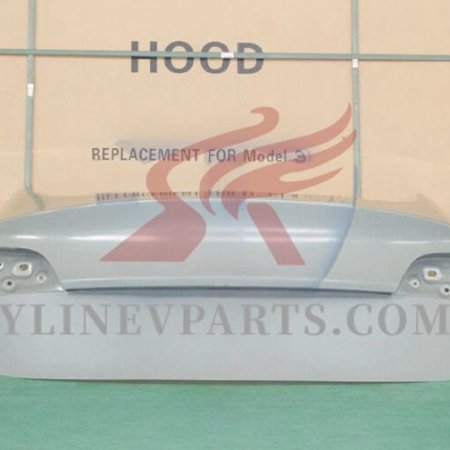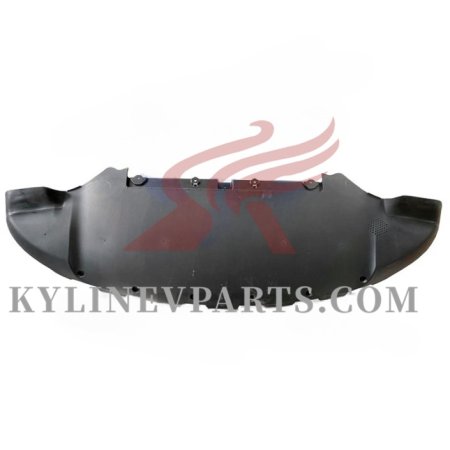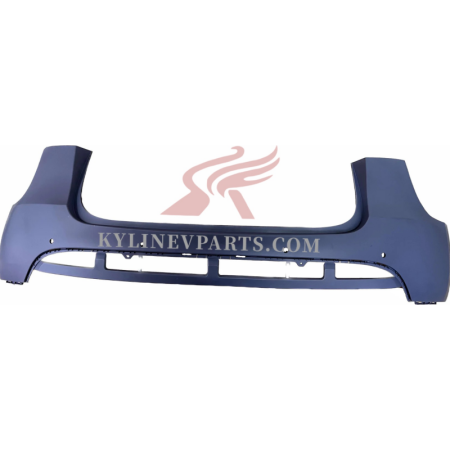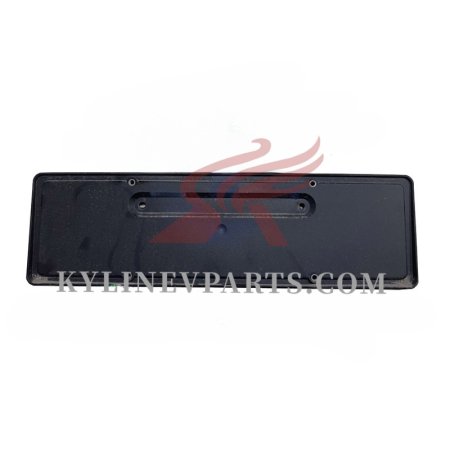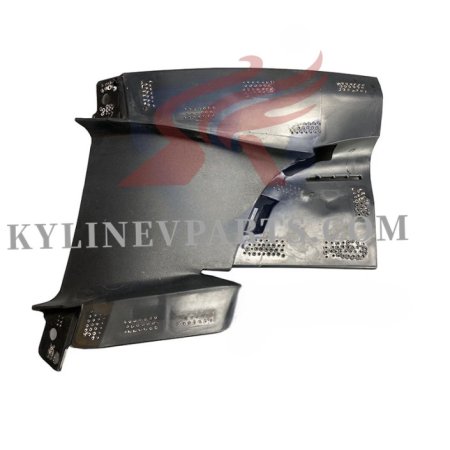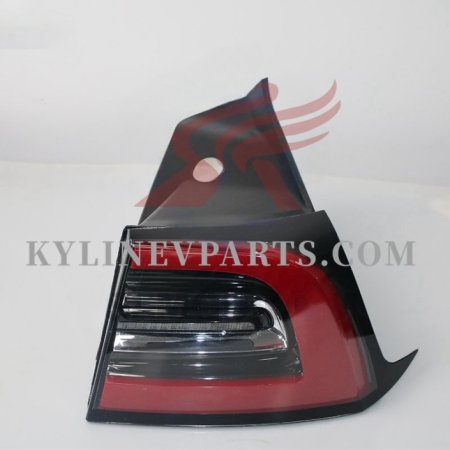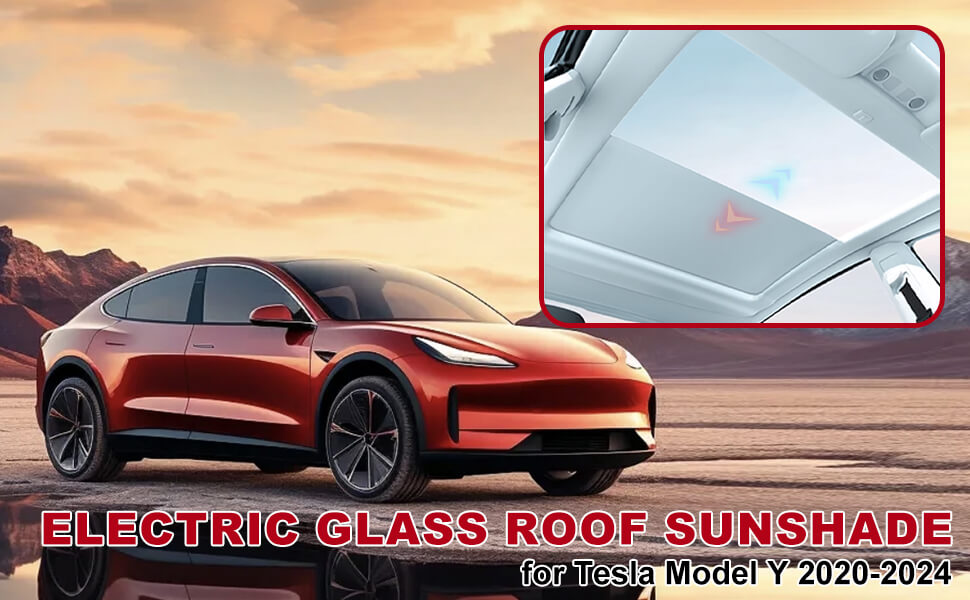Understanding the Importance of the Tesla Model 3 Front Bumper
The front bumper of your Tesla Model 3 is far more than just a shield against collisions—it’s an integral part of your car’s design, safety, and functionality. Though it’s often taken for granted, this crucial component serves as the first line of defense, absorbing impacts, deflecting debris, and protecting vital systems from environmental hazards. A well-maintained bumper not only keeps your vehicle looking sharp but also ensures optimal performance and safety.
It’s easy to overlook the importance of the front bumper until it’s damaged or in need of replacement. But understanding its multi-faceted role can empower you to make better decisions when it comes to repairs, upgrades, or customization. After all, the bumper doesn’t just protect; it helps your Model 3 perform at its best, preserving its aerodynamics, structural integrity, and safety features. So, when you think about replacing or upgrading your Tesla’s front bumper, you’re not just choosing an aesthetic option; you’re making a key decision that impacts your vehicle’s overall longevity and performance.
(1) Safety First: Impact Absorption and Protection
When it comes to protecting both you and your Tesla Model 3, the front bumper plays an indispensable role. In the event of a low-speed collision, the bumper acts as a buffer, absorbing much of the impact energy before it reaches the car’s core structure. Tesla, like many other automakers, carefully engineers bumpers to function as “crumple zones.” This means the bumper is designed to deform upon impact, dissipating energy and reducing the force that would otherwise be transferred to vital components such as the frame, airbags, and sensors.
The result? A significant reduction in the likelihood of injury to you and your passengers. While the bumper itself takes the brunt of the impact, it also helps protect critical systems that are essential for the car’s overall functionality. It’s not just about fender dents—it’s about preserving your safety and the integrity of your vehicle in the face of unexpected collisions.
In addition to safeguarding your vehicle, the front bumper of your Tesla Model 3 plays a critical role in reducing harm to pedestrians during an accident. It’s a multifaceted design feature, crafted not only to protect the car but also to minimize the force exerted on pedestrians. The materials Tesla uses in its bumpers are no accident; they’re chosen for their ability to absorb impact effectively, while adhering to strict safety standards. These standards are rigorously tested to ensure that, in the event of a collision, the bumper provides optimal protection for all involved.
(2) Aesthetics and Design
A sleek, well-maintained front bumper doesn’t just protect your Tesla Model 3—it elevates its overall aesthetic appeal. Tesla’s design philosophy revolves around creating modern, minimalist lines that exude sophistication and elegance, and the bumper is a key player in this visual equation. It’s more than just a functional part; it’s an integral element that helps shape the vehicle’s exterior, giving it that clean, dynamic look that Tesla owners love.
Whether you’re dealing with a minor scratch from a close call in the parking lot or you’re contemplating an upgrade to a more stylish, performance-oriented bumper, keeping the front bumper in top condition is essential. A polished, well-kept bumper not only ensures that your Model 3 retains its sleek, futuristic appearance but also reflects the attention to detail that Tesla is known for. After all, the first thing people see is the car’s exterior—so why not make sure it looks just as sophisticated as the technology inside?
(3) Aerodynamics and Efficiency
The front bumper of your Tesla Model 3 does more than just protect; it plays a pivotal role in the vehicle’s aerodynamics. A well-designed bumper helps manage airflow, directing air smoothly around the car’s body. This reduces drag and boosts efficiency—critical for maximizing range in an electric vehicle like the Model 3. In fact, the streamlined nature of Tesla’s bumpers contributes to the car’s overall performance, allowing it to glide through the air with minimal resistance.
But here’s the catch: if the bumper is damaged or not properly installed, it can disrupt that carefully orchestrated airflow. Even a minor imperfection can lead to turbulence, increasing drag and, in turn, reducing performance. So, while it may seem like a small detail, maintaining a flawless bumper is essential not just for aesthetics but also for keeping your Model 3 running at peak efficiency. After all, every little bit of resistance adds up, especially when it comes to maximizing your vehicle’s range.
When Should You Replace Your Tesla Model 3 Front Bumper?
There are several situations where replacing your Tesla Model 3’s front bumper becomes necessary. Whether it’s the result of an unfortunate collision, normal wear and tear, or even the desire to upgrade to a custom design, knowing when to replace your bumper is essential to maintaining both the safety and performance of your vehicle.
Accidental Damage
Accidents happen—whether it’s a minor fender-bender or a more serious collision, the result often involves scratches, dents, or even cracks to your Tesla Model 3’s front bumper. While a little scuff might seem like no big deal, even minor damage can lead to bigger issues down the line. If the damage is extensive, and the bumper is no longer capable of absorbing impact, it’s time for a replacement.
But there’s more to it than just looks. The bumper isn’t just there for protection—it houses critical safety sensors that help monitor and assist with driving functions. If those sensors become misaligned or damaged in the impact, their performance could be compromised. This can affect everything from collision detection to adaptive cruise control. So, even if the damage appears superficial, it’s important to consider how it might impact the functionality of your Tesla’s safety systems. When a bumper no longer fulfills its role, replacing it isn’t just about aesthetics—it’s about maintaining the integrity and safety of your vehicle.
Wear and Tear
With time, even the most durable materials can show signs of wear. The front bumper of your Tesla Model 3 is no exception. Constant exposure to the elements—UV rays, road salts, and harsh weather conditions—can take a toll on its materials. What was once a sleek, robust component can gradually degrade. The plastic or composite materials may become brittle, discolor, or develop cracks. While this type of damage doesn’t always immediately compromise the bumper’s ability to protect, it does have consequences.
At first, you might notice fading or surface cracks that dull your car’s otherwise pristine appearance. But don’t be fooled into thinking it’s only cosmetic. Over time, these small issues can grow into more significant ones, potentially affecting the bumper’s functionality. The brittle material can lead to further cracking, and if left untreated, it could eventually impair the bumper’s ability to absorb impacts effectively. So, while the bumper may still serve its purpose, maintaining its condition is crucial—not just for looks, but for long-term performance and safety.
Customization or Performance Upgrades
Not all bumper replacements are driven by damage—sometimes, it’s all about enhancing your Tesla Model 3’s look or performance. For many owners, the front bumper is an opportunity for customization, allowing them to personalize their vehicle’s aesthetic or even improve its driving dynamics. Aftermarket bumpers come in a wide range of styles and materials, offering everything from sleek, minimalistic designs to bold, aggressive looks that make a statement on the road.
But customization isn’t just about appearances. For those looking to enhance performance, a lighter, more aerodynamic bumper can significantly improve handling. These performance-oriented bumpers reduce weight, allowing for a more agile driving experience while also contributing to better airflow, which in turn boosts the car’s efficiency. Whether you’re seeking a sportier aesthetic or tangible performance upgrades, replacing the bumper is a perfect way to make your Model 3 truly your own—while enjoying the benefits of improved aerodynamics or weight distribution.
1. OEM vs Aftermarket Parts: What’s the Difference?
When it comes to replacing the front bumper of your Tesla Model 3, one of the most important decisions you’ll face is whether to go with OEM (Original Equipment Manufacturer) parts or aftermarket options. Both have their distinct advantages and drawbacks, and the best choice ultimately depends on your specific needs, budget, and how much customization you’re willing to consider for your vehicle.
In this section, we’ll dive into the key differences between OEM and aftermarket bumpers. Understanding these factors will give you the insights you need to make a more informed decision, whether you’re aiming for a factory-original replacement or looking to add a personal touch with an aftermarket upgrade. From performance and cost considerations to aesthetic and safety factors, we’ll break it all down for you, helping you navigate the pros and cons of each option.
What is OEM?
OEM stands for Original Equipment Manufacturer, meaning the parts are made by the same company that produced the original components for your vehicle. In the case of your Tesla Model 3, an OEM front bumper is a direct replica of the bumper that was installed when the car was first built. This ensures that the bumper matches the original in look, fit, and quality, providing you with the same level of performance and aesthetic that Tesla intended.
Advantages of OEM Parts
- Perfect Fit and Functionality: OEM parts are crafted to the exact specifications of the original components, ensuring a perfect fitand seamless functionality. This means your bumper will align flawlessly with the rest of your vehicle’s body, and all integrated features—like sensors, airbags, and mounting points—will perform as intended. No surprises, no compromises—just a smooth, factory-standard replacement.
- Quality Assurance: When you choose OEM, you’re opting for quality assurance. These parts are built to meet Tesla’s rigorous safety and performance standards, so you can rest easy knowing that your bumper is designed with the highest level of craftsmanship. This is especially important when dealing with safety-critical components like the front bumper, where any deviation from original specs could jeopardize your vehicle’s safety features.
- Warranty Coverage
Another significant advantage of OEM parts is the protection they offer to your vehicle’s warranty. By using Tesla-approved parts, you ensure that your warranty remains intact, safeguarding you against potential future issues. On the other hand, using aftermarket parts may raise concerns about warranty coverage, depending on Tesla’s policies and those of your insurance provider. - Resale Value
Choosing OEM parts also plays a crucial role in maintaining or even increasing your car’s resale value. Vehicles equipped with genuine parts are often seen as more desirable by potential buyers, who may be willing to pay a premium for a car that’s been maintained with original components. This could be an important consideration if you plan to sell or trade in your Model 3 down the line.
Disadvantages of OEM Parts:
- Higher Price: One of the primary drawbacks of OEM parts is the cost. Since these parts come directly from the manufacturer and adhere to strict quality control standards, they tend to carry a premium price tag. This might be a consideration if you’re working with a tight budget or if cost-efficiency is a higher priority than brand assurance.
- Limited Customization: Another limitation of OEM parts is the lack of customization options. If you’re seeking a unique, performance-oriented, or visually distinct bumper design, OEM might not meet your needs. The parts are essentially identical to what originally came with your vehicle, offering little to no room for personal flair or specialized upgrades. For those looking to make their Tesla stand out, aftermarket options might provide more variety.
What is Aftermarket?
Aftermarket parts are produced by independent manufacturers, not directly associated with Tesla. These companies specialize in creating components that are compatible with your Tesla Model 3, offering an alternative to the original parts. When it comes to front bumpers, aftermarket options often provide a broader range of choices in terms of design, materials, and even performance. Whether you’re looking for a more aggressive look, lighter weight, or a unique style, aftermarket bumpers can offer something beyond the standard Tesla offerings. However, it’s essential to consider how these parts will align with your vehicle’s original features, such as sensors, airbag systems, and fitment.
Advantages of Aftermarket Parts:
- Cost Savings: One of the biggest selling points of aftermarket parts is their affordability. Generally, they are significantly less expensive than OEM parts, which can be a deciding factor for owners who want to replace their bumper without breaking the bank. Whether you’re dealing with minor damage or just want to upgrade, aftermarket options often provide a budget-friendly solution.
- Variety and Customization: Aftermarket bumpers offer an impressive variety. Want a more aggressive look? Or perhaps a lightweight option for better performance? Aftermarket manufacturers give you the freedom to choose from numerous designs, materials, and features. Whether you’re looking for a more rugged, sporty appearance or an aerodynamic bumper to reduce drag, the aftermarket world is full of possibilities. You can find a bumper that fits your style or performance needs—something that goes beyond the standard Tesla offering.
- Availability: Availability can be a significant advantage when it comes to aftermarket parts. These parts are often produced by multiple third-party companies, which means you might have more options in terms of where to buy them. If you’re searching for a custom or specialized design that Tesla doesn’t offer, you’ll likely find a suitable replacement from one of these independent manufacturers. Plus, with aftermarket bumpers, the installation process can be more flexible, particularly if you’re aiming for a custom fit or looking to upgrade the look and feel of your Model 3.
Disadvantages of Aftermarket Parts:
- Potential Fitment Issues:Aftermarket parts, while designed to be compatible with your Tesla Model 3, may not always fit as seamlessly as OEM components. There can be instances where alignment issues arise, or you might need to make additional adjustments during installation to ensure everything fits properly. In some cases, this can affect the overall aesthetic and functionality of the vehicle.
- Quality Variability:Unlike OEM parts, which adhere to strict manufacturing standards, the quality of aftermarket parts can be hit or miss. Some aftermarket bumpers may match or even exceed OEM standards in terms of durability and performance, but others might be subpar. This inconsistency can lead to problems such as poor fit, reduced durability, or compromised safety features.
- Impact on Warranty:Installing aftermarket parts can potentially void certain aspects of your Tesla’s warranty. If keeping your warranty intact is a priority, you’ll need to review Tesla’s policy on aftermarket modifications. It’s advisable to consult with your dealership before opting for aftermarket parts to ensure you’re not jeopardizing warranty coverage for other systems in your vehicle.
OEM vs Aftermarket: A Quick Comparison
| Feature | OEM Parts | Aftermarket Parts |
| Fit and Functionality | Exact replica of original parts, perfect fit | May vary, potential for fitment issues |
| Quality | High, meets manufacturer standards | Varies, can be high or low quality |
| Price | Generally more expensive | Often more affordable |
| Customization | Limited to standard options | Offers more variety and customization options |
| Warranty Impact | No impact on warranty | Could void some aspects of warranty |
| Resale Value | Higher resale value | May reduce resale value if not OEM |
2. Cost Comparison: OEM vs Aftermarket Front Bumpers for Tesla Model 3
When considering a front bumper replacement for your Tesla Model 3, cost is undoubtedly a crucial factor. The price you’ll pay can vary dramatically depending on whether you opt for OEM (Original Equipment Manufacturer) parts or aftermarket alternatives. Each option offers distinct advantages, but the financial implications differ significantly. In this section, we’ll explore the cost breakdown for both OEM and aftermarket bumpers, helping you weigh the pros and cons of each choice.
How Much Does an OEM Front Bumper for Tesla Model 3 Cost?
When it comes to replacing your Tesla Model 3’s front bumper with an OEM (Original Equipment Manufacturer) part, you’re paying for precision, quality, and guaranteed compatibility. Tesla’s reputation for engineering excellence means that their OEM parts are designed to meet the highest standards. This assurance comes at a premium, as OEM bumpers tend to be significantly more expensive than their aftermarket counterparts.
Cost Breakdown of OEM Front Bumper
- Base Price: The cost of an OEM front bumper for a Tesla Model 3 typically falls between $600 and $1,200. This price varies depending on the model yearand specific features. For instance, bumpers equipped with advanced sensors, cameras, or integrated fog lights can push the price toward the higher end of the range. Upgraded versions or those with additional design elements may also contribute to the increased cost.
- Labor Costs: Installing the OEM bumper requires professional expertise to ensure proper alignment and functionality. Labor fees generally range from $150 to $500. The total labor cost can fluctuate depending on your location, the complexity of the bumper installation, and the rates of the repair shop. In more metropolitan areas, expect the labor charges to lean toward the higher end of the spectrum.
- Total Estimated Cost: When you combine the price of the bumperwith labor costs, the total expenditure for replacing an OEM front bumper on a Tesla Model 3 will likely range from $750 to $1,700 or more. This estimation is flexible, depending on factors like the bumper’s features, your geographical location, and the specific repair shop’s pricing.
Why the Higher Cost?
- Quality and Material: OEM bumpers are crafted from top-tier materials, engineered to meet Tesla’s stringent safety and performance standards. This premium construction ensures that the bumper not only withstands impacts but also contributes to the vehicle’s overall durability and safety.
- Perfect Fit: Unlike aftermarket parts, which may require adjustments or customization, OEM bumpers are designed specifically for the Tesla Model 3. This guarantees a seamless fit, ensuring that every component aligns perfectly with the rest of the vehicle. No guesswork, no modifications—just an exact match.
- Manufacturer Warranty: With OEM parts, you’re not just paying for quality and a perfect fit; you’re also gaining the assurance of a manufacturer warranty. Tesla stands behind their OEM components, offering protection against any defects in workmanship or material. This added layer of security is something that aftermarket options often lack, providing peace of mind for long-term ownership.
How Much Does an Aftermarket Front Bumper for Tesla Model 3 Cost?
When considering an aftermarket front bumper for your Tesla Model 3, one of the primary draws is the cost-effectiveness. Unlike OEM parts, which carry a premium due to their manufacturer specifications, aftermarket bumpers come from third-party manufacturers, and that generally translates to a lower price tag. However, as with any aftermarket part, the cost can fluctuate based on factors like quality, design, and functionality.
Cost Breakdown of Aftermarket Front Bumper:
- Base Price:Aftermarket front bumpers for the Tesla Model 3 can range significantly in price, typically anywhere from $200 to $700. This price variance depends largely on the brand, material, and design of the bumper. For example, fiberglass and plastic bumpers tend to be on the more affordable side, while carbon fiber bumpers, prized for their lightweight and sleek design, can push the price closer to the higher end of the spectrum.
- Labor Costs:The installation of an aftermarket bumper generally costs between $100 and $300. The variation here depends on the bumper’s design complexity and the hourly rate charged by the shop performing the installation. Some bumpers might require additional modifications, pushing labor costs toward the upper end of the range.
- Total Estimated Cost:When combining the bumper price and labor costs, the total cost for an aftermarket front bumper replacement on a Tesla Model 3 typically falls between $300 and $1,000. For those opting for high-end carbon fiber options or more intricate designs, the cost can approach the price of an OEM bumper, but there are still many affordable choices that offer substantial savings over the OEM counterpart.
Why the Lower Cost?
- Manufacturing Scale: Aftermarket parts are often produced in larger quantities, which allows manufacturers to benefit from economies of scale. This bulk production drives down unit costs, making these parts more affordable compared to OEM options.
- Material Variability: One key reason for the lower cost is the material used. Aftermarket bumpers may incorporate less expensive materials, such as standard plastics or fiberglass, instead of the premium materials found in OEM bumpers. Additionally, the quality of materials can vary greatly among different aftermarket brands, further influencing the price.
- Design Variations: Many aftermarket bumpers feature more aggressive or stylized designs that cater to performance enthusiasts or aesthetic-focused customers. While these bumpers can provide a customized look or aerodynamic benefits, they may not always adhere to the same strict safety standards as OEM components. This trade-off in design and performance often makes them less expensive.
Comparing Total Costs: OEM vs Aftermarket Front Bumper for Tesla Model 3
Here’s a quick comparison of the costs associated with OEM and aftermarket front bumpers:
| Part Type | Base Cost | Labor Cost | Total Cost |
| OEM Front Bumper | $600 – $1,200 | $150 – $500 | $750 – $1,700 |
| Aftermarket Front Bumper | $200 – $700 | $100 – $300 | $300 – $1,000 |
3. Quality and Durability: Which Is Better for Tesla Model 3?
When replacing the front bumper of your Tesla Model 3, one of the most important considerations is the quality and durability of the part you choose. The bumper is not just a cosmetic feature; it plays a crucial role in protecting the vehicle’s frame, sensors, and even passengers in the event of an impact. With two main choices—OEM (Original Equipment Manufacturer) and aftermarket bumpers—it’s essential to understand the differences in quality and longevity.
Quality of OEM vs Aftermarket Front Bumpers
1. OEM Front Bumpers: Built to Tesla’s High Standards
When it comes to protecting your Tesla Model 3, the quality of the front bumper is non-negotiable. OEM (Original Equipment Manufacturer) bumpers, designed and manufactured by Tesla or licensed partners, are crafted to meet the company’s exacting standards for quality, safety, and performance. Let’s take a closer look at why OEM bumpers excel in these areas:
- Precise Engineering:OEM bumpers are built with precision, tailored to the exact specifications of your Tesla. Since they’re made by the same manufacturer that produced your original parts, these bumpers guarantee a perfect fit. No modifications are needed, ensuring smooth integration with the rest of your vehicle. The seamless alignment enhances both the appearance and functionality of your Tesla, making it look and perform as good as new.
- High-Grade Materials:Tesla’s commitment to durability is reflected in the materials used in their OEM bumpers. Constructed from premium materials, these bumpers are engineered to endure harsh conditions, from extreme weather to minor collisions. Whether you’re driving in the rain, snow, or sun, the bumper retains its integrity, ensuring your vehicle’s body remains protected. Designed to absorb shocks and minimize damage, these bumpers are built for the long haul.
- Safety Features:Safety is at the heart of every Tesla, and the front bumper is no exception. OEM bumpers are designed with integrated safety features like crash sensors and airbag deployment systems that work in tandem with your car’s advanced safety technologies. This level of integration ensures that your bumper doesn’t just protect your vehicle’s exterior but also plays a critical role in your safety during accidents, providing optimal crash performance.
2. Aftermarket Front Bumpers: Varying Quality Levels
Aftermarket front bumpers for the Tesla Model 3 offer a wide range of options, but the quality varies greatly between brands. Here’s why it’s important to consider the level of quality before making your choice:
- Material Quality: Aftermarket bumpers are often made from materials like fiberglass, plastic, or carbon fiber. While some high-end options can match the durability of OEM parts, others may use cheaper materials that are prone to cracking, fading, or other forms of wear over time. For example, fiberglass bumpers, while lightweight, tend to be more brittle and less durable than OEM plastic bumpers.
- Quality Control: Unlike OEM parts, which are subject to rigorous quality control, aftermarket bumpers come from various manufacturers with differing standards. As a result, fit and finish can vary significantly. One bumper might fit like a glove, while another might require adjustments or even fail to align properly.
- Certification and Testing: OEM bumpers are rigorously crash-tested and designed to meet Tesla’s exact safety standards. Unfortunately, most aftermarket bumpers aren’t subject to the same level of testing. Although some top-tier aftermarket manufacturers do conduct crash testing, many others don’t, meaning you may sacrifice some safety features and protection in the event of a collision.
Durability of OEM vs Aftermarket Front Bumpers
1. OEM Bumpers: Built to Last
When it comes to durability, OEM bumpers are crafted with longevity in mind, designed to endure the test of time and the demanding conditions that come with owning a Tesla Model 3. Here’s why these bumpers are built to last:
- Long-Term Performance: Tesla’s OEM bumpers are rigorously tested to ensure they exceed durability standards that align with the high expectations set for Tesla vehicles. These bumpers are constructed from premium materials designed to handle the daily grind, including impacts, extreme weather conditions, and fluctuating temperatures. Whether you’re driving through a downpour or under the harsh midday sun, your OEM bumper will continue to perform reliably.
- Impact Resistance: One of the standout features of OEM bumpers is their ability to absorb impact. Specifically engineered for Tesla vehicles, they’re built to safeguard more than just your exterior — they protect your vehicle’s crucial components. In the unfortunate event of a collision, especially at low speeds, the bumper’s ability to dissipate shock and energy ensures that the underlying structures, like the frame and safety systems, remain intact.
- Corrosion and Fade Resistance: Over time, bumpers are exposed to the elements — UV rays, road salts, and constant abrasion from driving. However, Tesla’s OEM bumpers are made with materials that resist corrosion and fading, ensuring the bumper stays sleek and functional. No matter how many seasons pass, you can trust that the materials used in OEM bumpers are built to withstand environmental wear, keeping both their appearance and performance in top shape for years to come.
2. Aftermarket Bumpers: Durability Can Vary
The durability of aftermarket bumpers can be a bit unpredictable, as it largely hinges on the manufacturer and the materials used. While some bumpers may hold up well, others may falter over time. Here’s what you need to know:
- Material Strength: High-quality aftermarket bumpers, often crafted from carbon fiber or reinforced plastic, can offer impressive durability. They’re built to withstand impacts and harsh conditions. However, cheaper bumpers made from fiberglass or low-grade plastic might not measure up. These materials can crack, fade, or degrade much quicker, especially when exposed to extreme weather elements.
- Performance in Collisions: When it comes to collisions, aftermarket bumpers generally fall short of OEM standards. Some high-end options are designed with impact resistance in mind, but they still often lack the comprehensive protection offered by OEM bumpers. The difference becomes clear in real-world crashes—while aftermarket bumpers may absorb some force, they might not prevent damage to your Tesla’s critical components as effectively as an OEM part.
- UV Resistance: If you’re opting for a budget-friendly aftermarket bumper, be cautious about its UV resistance. Fiberglass bumpers, in particular, are notorious for yellowing over time when exposed to sunlight. Even some plastic bumpers can lose their luster and become discolored, giving your car a worn-out look.
How to Assess the Quality and Durability of an Aftermarket Bumper
When considering an aftermarket bumper for your Tesla Model 3, it’s essential to evaluate its quality and durability to ensure it will stand up to daily use and provide the protection your vehicle deserves. Here are key factors to consider before making your purchase:
- Check Reviews: One of the best ways to gauge the quality of an aftermarket bumper is by reading reviews from other Tesla Model 3 owners. Look for feedback on the bumper’s fitment, appearance, and performance over time. Reviews often highlight issues like premature fading, cracking, or poor fit, providing you with insights that go beyond the manufacturer’s claims.
- Look for Certifications: Not all aftermarket bumpers are created equal, so it’s crucial to check for safety certifications. Some bumpers are crash-tested and certified to meet specific safety standards, like DOT (Department of Transportation) or ISO certification. These certifications indicate that the bumper meets or exceeds certain durability and safety criteria, offering extra peace of mind.
- Choose Reputable Brands: Reputation matters in the aftermarket world. Opt for well-established brands that specialize in high-quality Tesla parts. Trusted manufacturers are more likely to produce bumpers that offer solid performance, durability, and a proper fit. Their products often undergo rigorous testing to meet safety standards and provide long-lasting protection.
- Material Matters: The material used in the bumper plays a huge role in its durability. While fiberglass bumpers may be lighter and more affordable, they tend to be less impact-resistant and more prone to cracking. On the other hand, bumpers made from carbon fiber or reinforced plastic offer superior durability, better impact resistance, and longer lifespan, albeit at a higher price. Make sure to assess the material’s quality before committing.
Comparing Quality and Durability: OEM vs Aftermarket
| Feature | OEM Bumper | Aftermarket Bumper |
| Material Quality | Premium, long-lasting materials | Varies; cheaper materials may wear out faster |
| Impact Resistance | Excellent impact absorption and protection | Varies; some aftermarket bumpers are less durable |
| Fitment | Perfect fit for your Tesla Model 3 | May require adjustments, especially with low-end models |
| Weather Resistance | Resistant to UV rays, corrosion, and fading | Depends on material quality; may fade or crack over time |
| Crash Safety | Meets Tesla’s high safety standards | May not be tested for crash safety |
4. Making the Right Choice for Your Tesla Model 3
Choosing the right front bumper for your Tesla Model 3 isn’t just about looks—it’s about ensuring your vehicle performs at its best and remains safe over time. The decision can have a significant impact on the vehicle’s overall functionality, longevity, and even resale value. As we’ve discussed, OEM (Original Equipment Manufacturer) bumpers and aftermarket bumpers each offer distinct advantages and drawbacks. From the higher cost and superior quality of OEM bumpers to the more budget-friendly yet variable performance of aftermarket options, every factor from installation ease to durability must be carefully considered. Whether you’re replacing a damaged bumper or upgrading your car’s appearance, understanding these key differences will help you make an informed choice that suits your needs, preferences, and budget.
Factors to Consider Before Making Your Choice:
- Budget:When cost plays a pivotal role in your decision, aftermarket bumpers may be the more economical option. These bumpers typically come at a fraction of the price of OEM parts, giving you some financial breathing room. However, if the thought of superior quality and long-term reliability appeals to you, investing in an OEM bumper could be worth the extra expense.
- Customization:Aftermarket bumpers give you a world of options when it comes to customization. Whether you want to add a unique flair with aggressive styling, a different material, or a sleek, sporty look, aftermarket bumpers allow for personalization that OEM options can’t match. This makes them ideal for those seeking a more individualized touch to their Tesla.
- Safety:For many, the priority is safety. OEM bumpers are designed and tested to integrate perfectly with your vehicle’s advanced safety features. These bumpers are built to work in harmony with crash sensors, airbags, and other critical safety systems, ensuring that your Tesla performs as it should in the event of a collision. If safety is your main concern, you can’t go wrong with OEM parts.
- Durability:Durability is key, especially for a car that’s driven daily. OEM bumpers are engineered for long-term endurance, tested to withstand everything from impacts to weather conditions without compromising performance. If you’re looking for a bumper that can handle the rigors of everyday driving, an OEM bumper is built to last. However, if you’re willing to sacrifice a little longevity for a more affordable option, some high-end aftermarket bumpers still offer decent durability.
The Bottom Line: What’s Best for Your Tesla Model 3?
At the end of the day, the decision between an OEM and an aftermarket bumper boils down to your unique needs, priorities, and budget. Let’s break it down:
- OEM Bumpers:If you’re after the gold standard of performance, fit, and safety, then OEM bumpers are the clear winner. Designed by Tesla to seamlessly integrate with your Model 3, these bumpers guarantee a perfect fit, exceptional durability, and an optimal level of safety. They’re engineered to meet the highest standards, ensuring your vehicle performs as it should, with crash sensors and other integrated features that work in harmony with your car’s systems. The premium price tag is justified by the peace of mind that comes with owning a part that’s made to last, with long-term reliability you can count on.
- Aftermarket Bumpers:On the flip side, if you’re hunting for something that’s more budget-friendly or want to add a touch of customization to your Tesla, aftermarket bumpers offer a wealth of options. From a variety of styles to a range of materials, aftermarket bumpers allow you to personalize your vehicle without breaking the bank. However, quality can vary. Some aftermarket bumpers deliver excellent durability and performance, while others may not meet the stringent standards of OEM parts. The key is to do your research—read reviews, check for certifications, and opt for well-established brands to ensure you’re not sacrificing safety or longevity.
The decision comes down to a balance of cost, quality, durability, and safety. If you’re after guaranteed durability and peace of mind, the OEM bumper is the way to go. But if you’re looking for something more affordable with a personalized flair, and are willing to weigh the risks, a carefully selected aftermarket bumper can serve you well.
How to Save Tesla Model 3 Front Bumper Replacement Cost? Where to Order?
Kylin EV Parts Ltd is located in Guangzhou, the hub of China’s automotive parts industry. Established in 2013, we focus on the supply chain of new energy automotive parts, providing brand solutions for entire vehicle series from a screw to exterior components, connecting the upstream and downstream supply chains, and forming strategic alliances with production factories through customization, alliance. Adhering to the principle of ensuring the quality of a component is equal to protecting the safety of a family.
In 2022, our international trade department was established, focusing on the integration of Tesla, VW, and BYD, as well as aftermarket modifications. As China’s premier B2B supplier, we offer a comprehensive service in integrating EV spare parts for numerous foreign sellers, both online and offline.
We extend a cordial invitation to collaborate with foreign dealers and explore OEM and ODM partnerships for our products. With our commitment to the most professional service, the highest quality products, and the most reasonable prices, we endeavor to provide unparalleled support.


